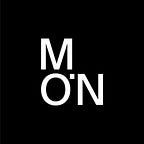Reading Review, Methodology & Bibliography
for ‘How must we design responsibly for the future?’
Methodology
The methodologies of research directed towards investigating the topics of the thesis have predominantly been through reading texts of design philosophy, the history of design, as well as particular non-fiction novels that illustrate design attitudes playing out. Vital also in the research process have been documentaries about certain designers and their opinions and additionally, about design initiatives by notable figureheads from the likes of silicon valley. For probing further into more precise issues, internet research has been conducted to extract information and imagery to support ideas, discussions and evidence.
Reading Review
Integral in the structural debates of the thesis have been several writings where the idea of ‘design’ has been digested differently. These have manifested in texts of fictional paradises to brutal criticisms of the design profession, all of which have influenced and informed the forthcoming themes and discussions.
Returning first to 1890, with William Morris’ ‘News from Nowhere’. The textile designer and eco-socialist paints life in England through his idealistic vision of how the world could be. Centred around mutual care, themed on craftsmanship, and freed from commercialism, the society imagined in the story is one that thrives in the aftermath of phasing out the establishments and pitfalls still in place today. After waking up in 2102, the protagonist, accustomed to his usual life in industrial victorian London, is staggered when embarking upon a utopia restored to rurality, inhabited by people enjoying their lives, reciprocally benefitting from each other through their generosity and shared crafts. Not only does the novel include some brilliantly pure interactions between characters that symbolise attitudes of which can take into the context of design, but the story, now 130 years old, signifies the bitter strife of designers already aware of the destructions caused by industrialisation.
A less blissful escape of reading is the previously introduced ‘Design for the Real World: Human Ecology and Social Change’ by Victor Papanek, in which the Austrian-American author boldly calls design to account for being a damaging, even murderous profession of pollution, educating the reader of the social and moral responsibilities of design. The distinguished designer, educator and writer begins the book with a powerful preface where he asserts, (Papanek, V. 1976, p. 10) “Design must become an innovative, highly creative, cross-disciplinary tool responsive to the true needs of men.” Papanek equips the audience with a new perspective of critical thinking towards design, opening up a challenging dialogue between the industrial designer and consumer where problem-solving shifts to the top of priorities. ‘Design for the Real World’ heavily parallels with the predominant issues debated under the overarching questions of responsibility in design, with Papanek defying even some of the most thorough ideologies of others.
Formed of a collaborative project concerning objects and expressions of ‘ordinariness’, later transformed into an exhibition, ‘Super Normal: Sensations of the Ordinary’ is co-authored by like-minded industrial designers of restraint, Naoto Fukasawa and Jasper Morrison. Comprised of a specific selection of consumer products that each exude an abundance of normality, the two designers go about distilling precisely what makes an object ‘Super Normal’, making a strong case for the importance and value in design that does not try to provoke reactions of surprise or stimulation. Meditatively and sensitively, Fukasawa and Morrison interrogate and oppose the common connotations of ‘normality’ in appreciation of that which causes initial reactions such as “nothing special” or “just plain ordinary,” for these grow in longterm value through their unassuming usefulness. Particularly with Morrison’s excerpts, he offers compelling reasoning to design our everyday objects with qualities of quietness and reduction, alleging ‘special’ looking things demand too much noticeability, being awkward and interruptive with their presence. ‘Super Normal’ imagines responsibility to a more delicate sense, in touch with the ‘feeling’ of objects and the atmosphere they create.
Bibliography
Rams, D. and Lovell, S. (2011) Dieter Rams: As Little Design as Possible. London: Phaidon
Papanek, V. (1971) Design for the Real World: Human Ecology and Social Change. London: Thames & Hudson
Bicknell, J. and McQuinston, L. (1976) Design for Need: The Social Contribution of Design: An Anthology of Papers Presented to the Symposium at the Royal College of Art. London: Pergamon Press
Shell (2020) The Great Travel Hack. Available at: https://www.shell.co.uk/make-the-future/cleaner-mobility/the-great-travel-hack.com (Accessed: 7 January 2020).
Van Halvert, M. et. al. (2016) The Responsible Object: A History of Design . Amsterdam: Valiz.
Hara, K (2003). Designing Design. Baden: Lars Müller Publishers.
Rams (2018) Directed by Gary Huswit [Documentary]. United States: Gary Huswit.
Lange, A. (2018). What We’ve Learned from Dieter Rams, and What We’ve Ignored. Available: https:// www.newyorker.com/culture/cultural-comment/ what-weve-learned-from-dieter-rams-and-what- weve-ignored. Last accessed 4th January 2020.
Morris, W. (1890) How I became a socialist. London: Self Published.
MoMA (2019) Dieter Rams
Portable Transistor Radio and Phonograph (model TP 1). Available at: https://www.moma.org/collection/works/2500 (Accessed: 6 January 2020).
Ziegler, C. (2016) Why does this Nespresso machine have Bluetooth?. Available at: https://www.theverge.com/2016/2/23/11099500/nespresso-prodigio-bluetooth-coffee-machine (Accessed: 5 January 2020).
Nespresso (2020) Machines Range. Available at: https://www.nespresso.com/uk/en/prodigio-machines-range (5 January 2020).
Samsung (2020) Samsung Family Hub Smart Fridges. Available at: https://www.samsung.com/uk/refrigerators/family-hub-fridge-freezers/ (5 January 2020).
Fukasawa, N. and Morrison, J. (2007) Super Normal: Sensations of the Ordinary. Baden: Lars Müller Publishers.
Garland, K. (1963) First Things First. London.
Vitsœ (2019) 606 Universal Sheling System. Available at: https://www.vitsoe.com/gb/606 (6 January 2020).
Vitsœ (2019) Ethos | About Us. Available at: https://www.vitsoe.com/gb/about/ethos (6 January 2020).
Sudjic, D. (2009) The Language of Things. London: Penguin.
Schwartz, B (2005) The Paradox of Choice New York: HarperCollins Publishers.
Inside Bill’s Brain: Decoding Bill Gates (2019) Netflix, September 20, 2019. Available at: Netflix (Accessed: 21 December 2019).
V&A (2020) Britain Can Make It. Available at: https://www.vam.ac.uk/articles/britain-can-make-it (7 January 2020).
